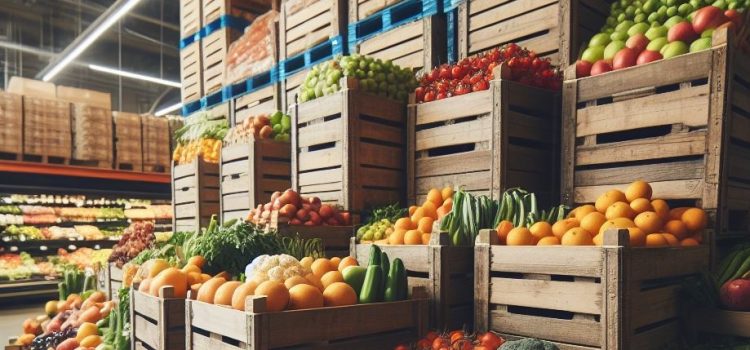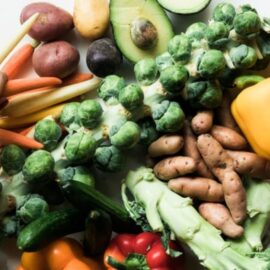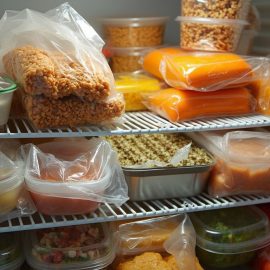
This is a free excerpt from one of Shortform’s Articles. We give you all the important information you need to know about current events and more.
Don't miss out on the whole story. Sign up for a free trial here .
Where do fresh vegetables come from in the winter? Do imported vegetables and fruits stay fresh?
Even in midwinter, there’s no shortage of “fresh” produce at the grocery store. But increasing amounts of those fruits and vegetables are grown in other countries and imported to the US, which takes time—so they might not be as fresh as you think.
Continue reading to learn where “fresh” produce comes from in winter.
How Do We Get Fresh Fruits and Vegetables in the Winter?
Throughout much of the United States, it’s not possible to grow our favorite fruits and vegetables year-round. So how is it possible that there are always fresh apples on the shelves and crisp salad greens in the cooler at your local grocery store?
One answer is that the word “fresh” can be a bit of a misnomer. Some fruits and vegetables at your grocery store can be weeks or months old. For example, apples are harvested in the fall from orchards across the US and then put into storage, where they can remain for nearly a year before they land on grocery store shelves. But for other kinds of produce, the fruits and vegetables on your grocery store shelves really are grown and harvested in the winter—and these imported vegetables and fruits often take a long journey to reach your supermarket.
Some Produce Is Grown in the US, Even in the Winter
While much of the produce on grocery store shelves is imported, a portion of it is still grown in the US. In the winter, American-grown produce comes from just a few states: California, Arizona, and Texas.
The journey from field (or orchard) to grocery store shelves around the country takes time. Vegetables and fruits are often picked one day and then cleaned and packed the next. Next, they might sit in storage for a day, and then spend about four days in transit. Then, they take a day or two to get from a terminal market, a large market near a transportation hub, to a distributor’s facility. Finally, the distributor packs the produce for delivery to the grocery store.
The states where farmers grow produce in the winter have mild climates and large stretches of fertile land, so they have longer growing seasons than other parts of the country. But even in these states, fruits and vegetables can’t grow year-round. So to keep them on grocery store shelves in the winter, the US imports them from the southern hemisphere. The US Department of Agriculture (USDA) reports that the US typically exports more agricultural goods—including fruits and vegetables—than it imports. But imports are growing more quickly than exports, driven in part by our expectations that our favorite fruits and vegetables will be available year-round.
Much of the Produce You Eat Is Grown in Other Countries
The USDA reports that 60% of the fresh fruit and 38% of the fresh vegetables available in American grocery stores are imported. While the US imports vegetables from more than 125 countries, much of that produce comes from just two: Mexico and Canada.
Avocados, bell peppers, cucumbers, lemons, tomatoes, and watermelons have become some of the biggest categories for fruit and vegetable imports from Mexico. The main kinds of produce that the US imports from Canada are bell peppers, cucumbers, and tomatoes. Other countries grow produce that’s popular at American grocery stores, too. For example, bananas and pineapples grown in Guatemala and Costa Rica are sold at US grocery stores year-round. And some items come from even farther afield: The US imports garlic, ginger, and sweet potatoes from China and oranges from Morocco.
But It’s Still Possible to Eat Locally, Year-Round
As we import more of our fruits and vegetables, some observers worry about what we lose. Farmers develop a deep knowledge of their local environment, which can be diminished if they don’t grow as much produce. We may also feel more mindful of our food if we eat produce that’s grown locally. Plus, because locally grown fruits and vegetables are harvested at their peak, they not only taste better but are also more nutritionally dense than produce picked before its prime and shipped long distances.
Relying on local produce is also a more sustainable way to eat: Producing, processing, and packaging food accounts for more than a third of our greenhouse gas emissions, and getting your food locally can reduce your carbon footprint. Growing seasonally enables farmers to let the land cycle through crops and seasons as it naturally would. And they don’t have to use fossil fuels or large amounts of water to mimic seasonal weather, like summer heat, at other times of the year.
Though it might take some changes to your routine, it’s possible to eat locally-grown produce even in the winter. Vegetables and fruits including brussels sprouts, collard greens, parsnips, squash, and citrus such as clementines, grapefruit, and oranges are grown in the winter, while apples, pears, persimmons, and pumpkins are picked in the fall and winter. (Consult the Seasonal Food Guide to find out what’s in season in your area at any point in the year.)
You can find locally grown produce at your city’s farmers’ market or at your local grocery store, where experts say you can spot in-season produce by looking for fruits and vegetables that seem particularly abundant.

Want to fast-track your learning? With Shortform, you’ll gain insights you won't find anywhere else .
Here's what you’ll get when you sign up for Shortform :
- Complicated ideas explained in simple and concise ways
- Smart analysis that connects what you’re reading to other key concepts
- Writing with zero fluff because we know how important your time is






